From Asylum to Restaurant & Garden
A Fascinating Garden Tour and Award Winning Dining Experience in Tasmania - where history, sustainability, and flavour grow side by side.
Today on the Flowerlogue…
Hi Flower Friends, so glad you are here. I’m a certified florist, founder of Cerina Floral Atelier, freelancer, black cat wrangler, chocolate deviant and writer for Flowers Magazine Australia. Welcome to my newsletter The Flower Scout! I’d be chuffed to share my flower (albeit not many flowers in today’s post) stories with you. It’s easy just click below. This post is not that long, there’s just a few photos. BTW, all photos were taken by me.
For the best viewing experience, be sure to read this post on your desktop or via the substack app.
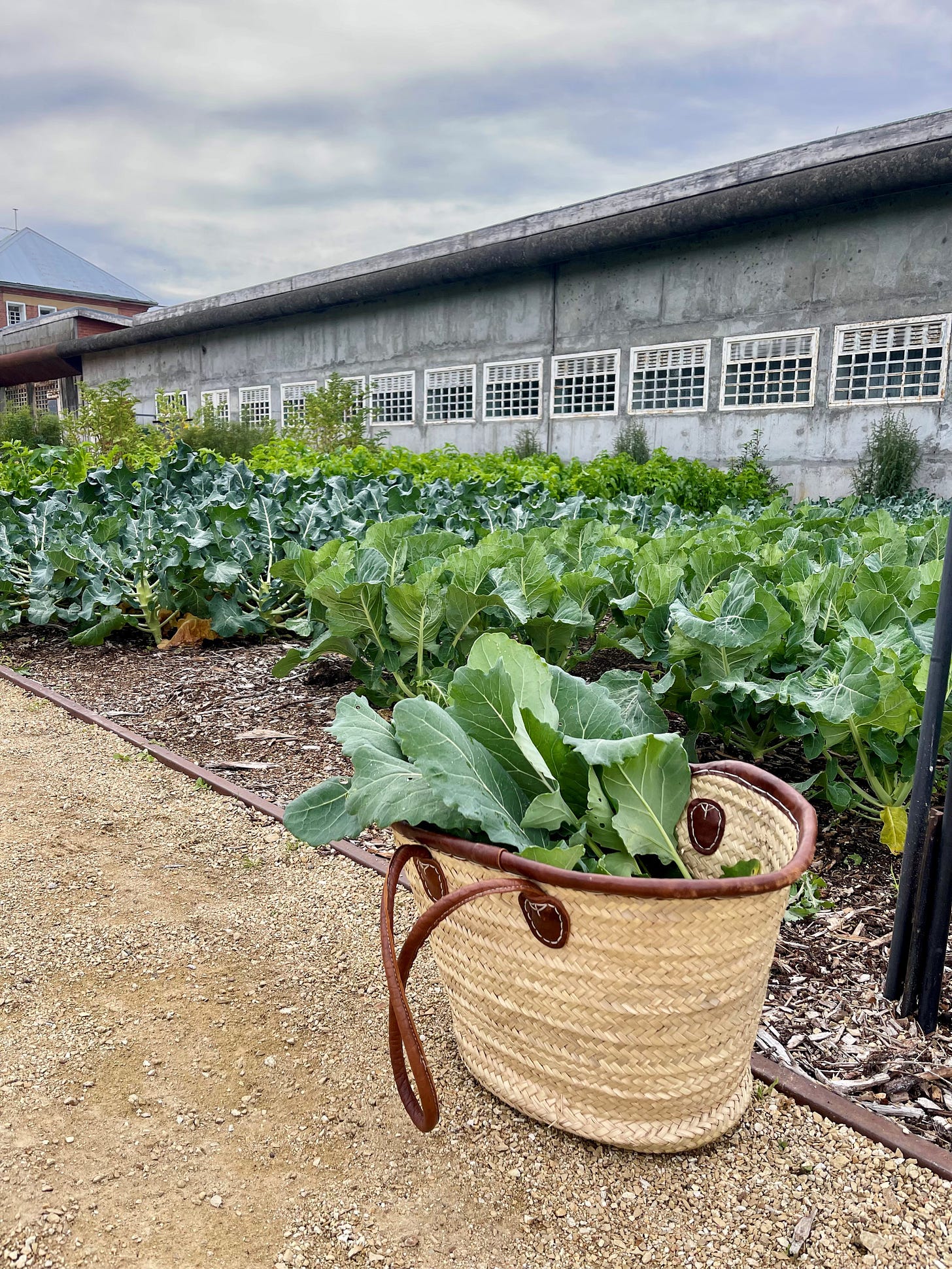
Flowers, Food, and the Art of Slow Travel
While this isn’t strictly a post about flowers, I suspect most flower-loving people share my appreciation for a thoughtfully curated garden-to-table dining experience. There’s something deeply satisfying about a place that invites you to wander through the garden before sitting down to a multi-course meal, where the produce on your plate has been harvested mere steps away. It’s the kind of immersive, seasonal experience that earns a restaurant its reputation as a true destination.
A guided garden tour followed by a seven-course degustation menu with paired drinks, attentive service, and layered historical context is, if you ask me, a deeply sensory experience worth travelling for. Happily, we do just that.
On our most recent trip in May, we finally managed to secure a garden tour booking at The Agrarian Kitchen in New Norfolk, about half an hour’s drive from Hobart. We’d missed out the previous year, so I was super excited to join the one-hour guided walk prior to our restaurant reservation.
First, I must confess: I have been meaning to look up the word agrarian.
agrarian (adjective)
relating to cultivated land or the cultivation of land.
— Oxford Languages via Google
Which, of course, makes perfect sense.
The Agrarian Kitchen is more than a restaurant, it’s a culinary ecosystem housed in a former mental asylum. Founded by Rodney Dunn (executive chef) and Severine Demanet in 2008, it began as a cooking school and farm, and moved into its current location, the Bronte Building at Willow Court, New Norfolk in 2015. By 2017, the restaurant opened its doors, and in 2020, the team responded to pandemic challenges by opening an outdoor kiosk serving more casual dishes. The cooking school followed in 2022, relocating from the original farm to a purpose-built facility on-site.
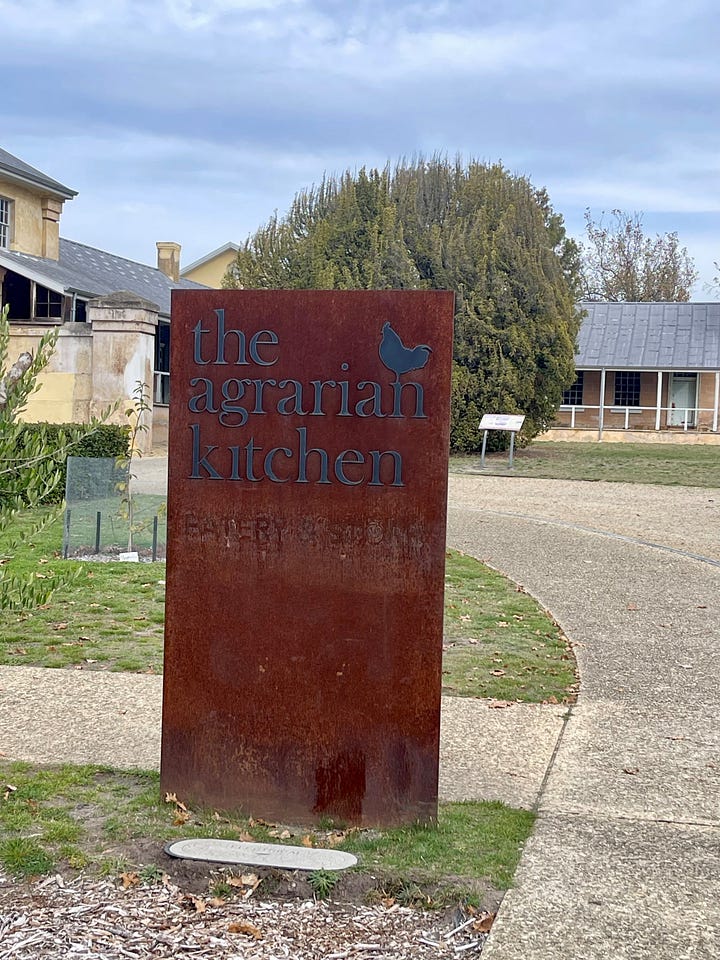

Their ethos is rooted in provenance, seasonality, and sustainability. 90 % of the ingredients for the restaurant menu is grown in the kitchen garden. The rest from are sourced from nearby growers, and there’s a strong emphasis on education, ethical sourcing, and regenerative practices. But let’s first start with the garden.
The Kitchen Garden
Just metres behind the restaurant lies the 1.3 acre kitchen garden - once the exercise yard of Australia’s oldest psychiatric hospital. Two sides are enclosed by rolled-top concrete walls that once kept patients in and the world out, the other two by original buildings with metal-barred windows. There’s a very eerie beauty to it all, as if time is very much present here. And I couldn’t help think that we were being watched during our visit.
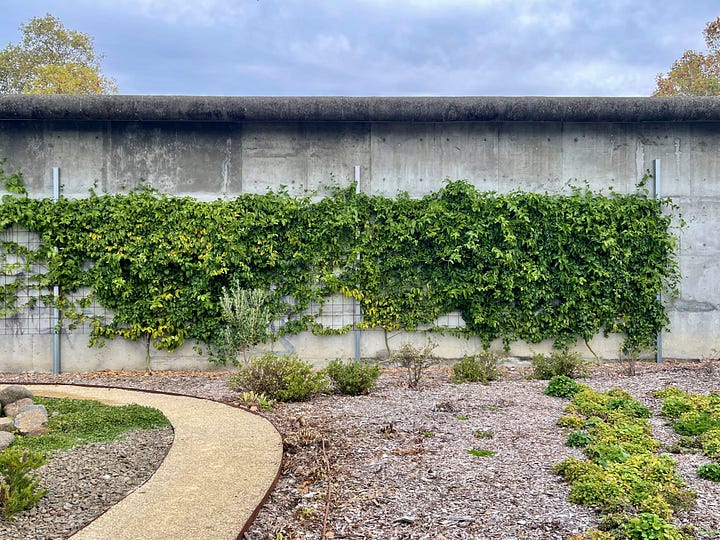

Our guide was Gabriel Paiva Lago, one of 3 gardeners. Brazilian-born and clearly passionate about what he does, Gabriel led us through the ten garden areas, which include two orchards, a citrus grove, a flower meadow (midway through its winter transition), a market garden, nursery, berry patch, greenhouse, shade house, and compost system. Only three gardeners tend the entire plot, four days a week. What’s ripening in the garden is what drives the creativity in the kitchen.
Despite not being much of a gardener myself (I struggle with even the hardiest houseplants), I found the garden incredibly inspiring. The team follows a low-impact, regenerative approach: no-dig beds, companion planting, nitrogen-fixing clover, and beneficial insects used in place of synthetic sprays. Each garden bed is the same size, allowing tools, polytunnels, and irrigation systems to be used interchangeably - an elegant, efficient system.
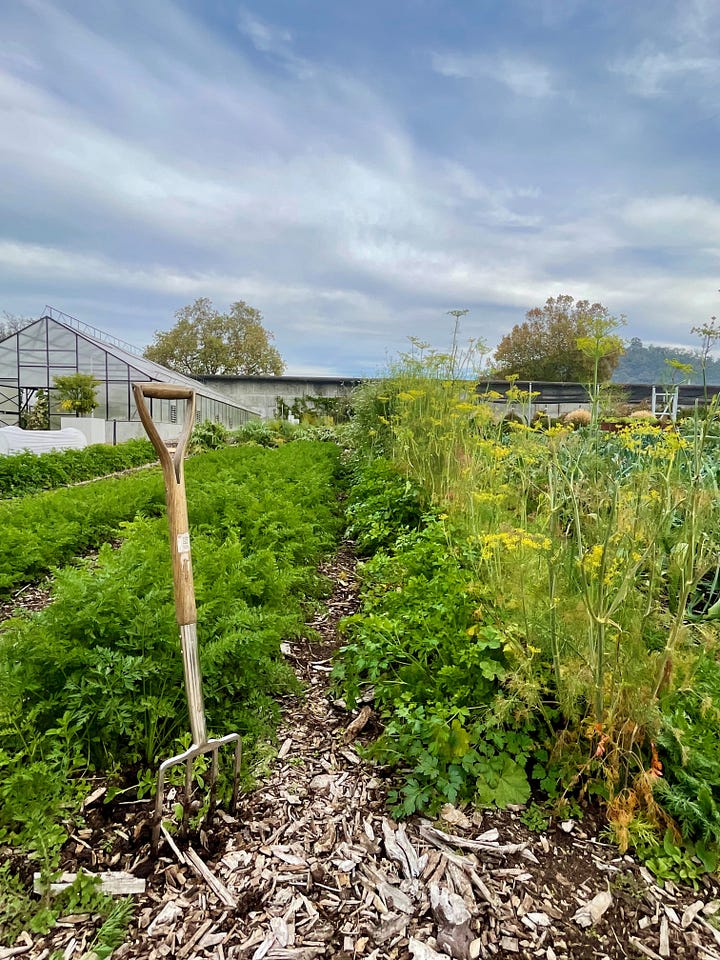
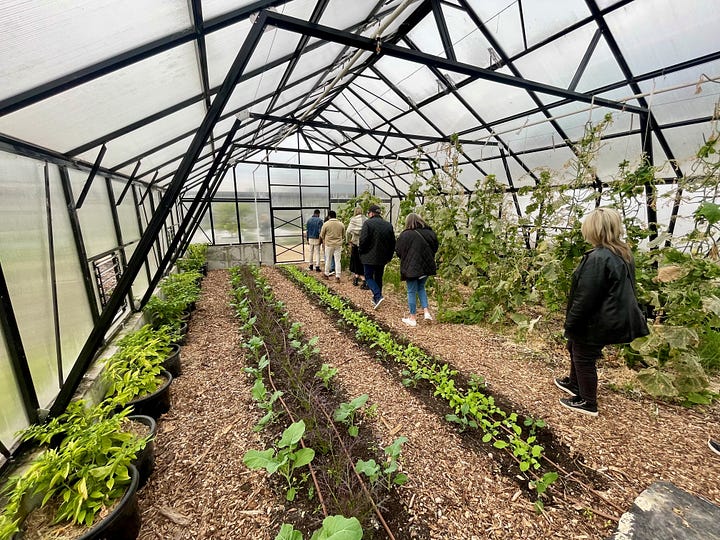
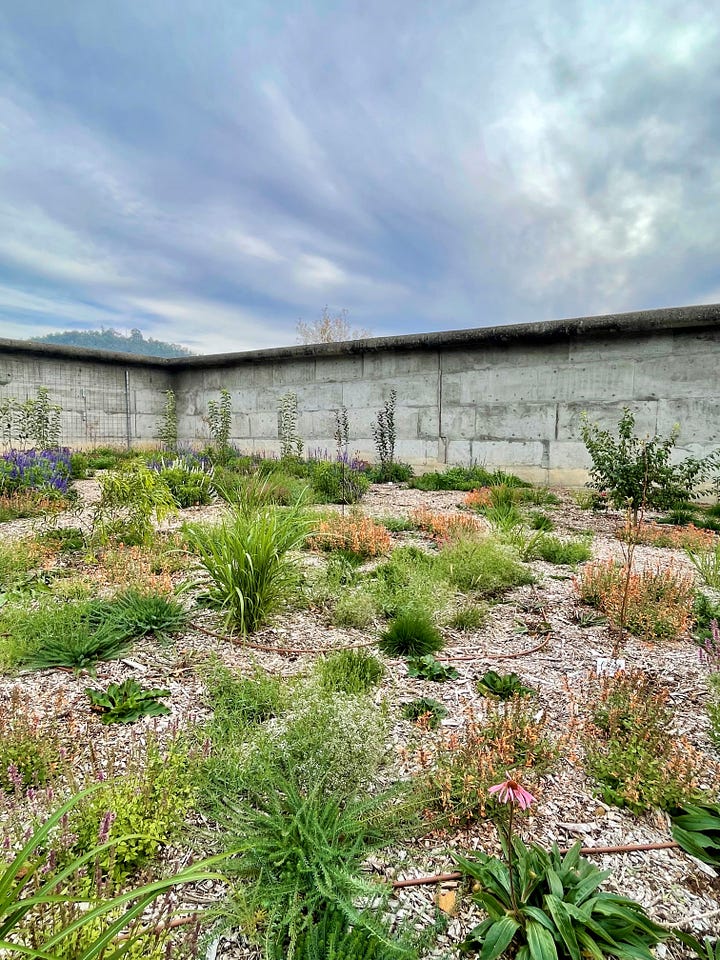
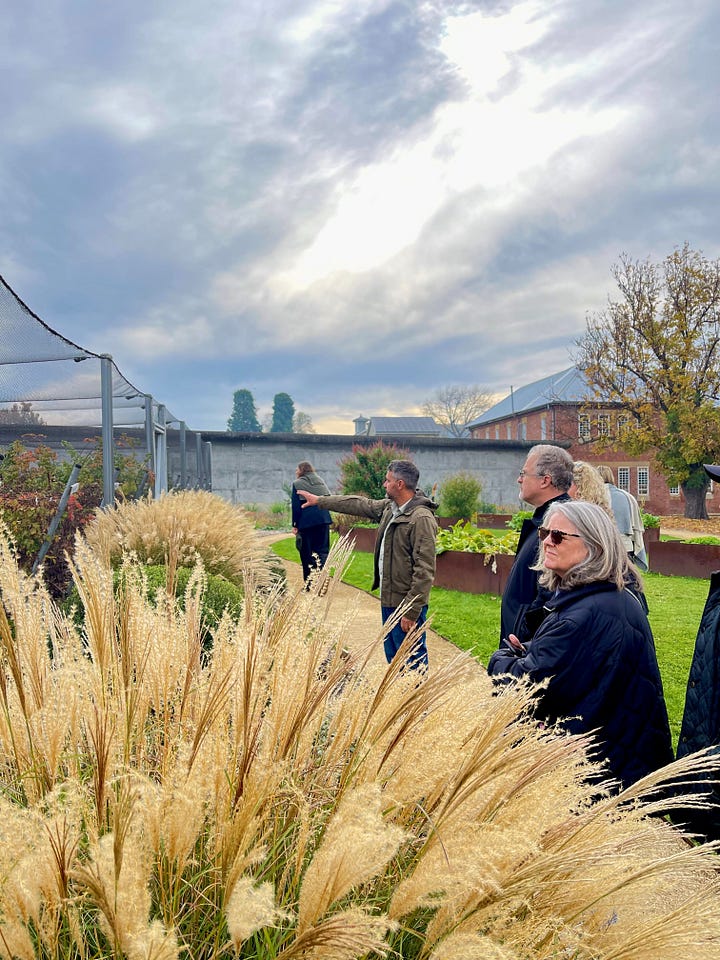
The flower meadow not only supplies the restaurant but plays an ecological role by attracting pollinators and birds. Juniper vines are shaded by the asylum wall, whilst gnarly and twisted espaliered apple trees - relocated from a demolished Hobart building site - add a sense of permanence and grace.
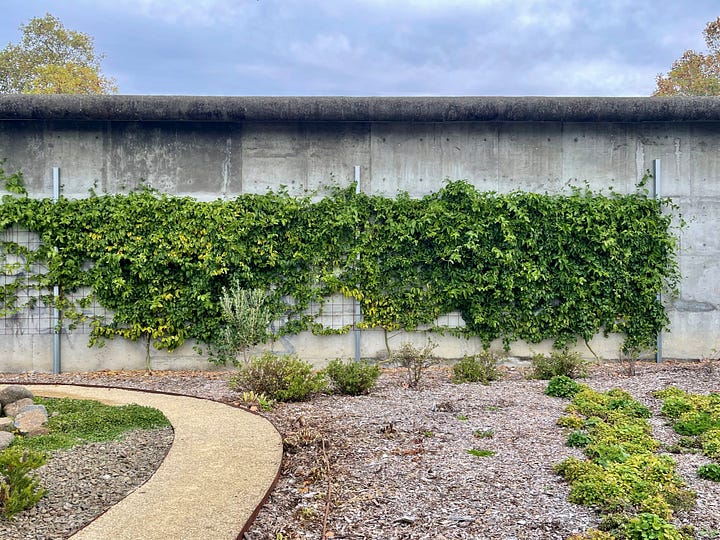

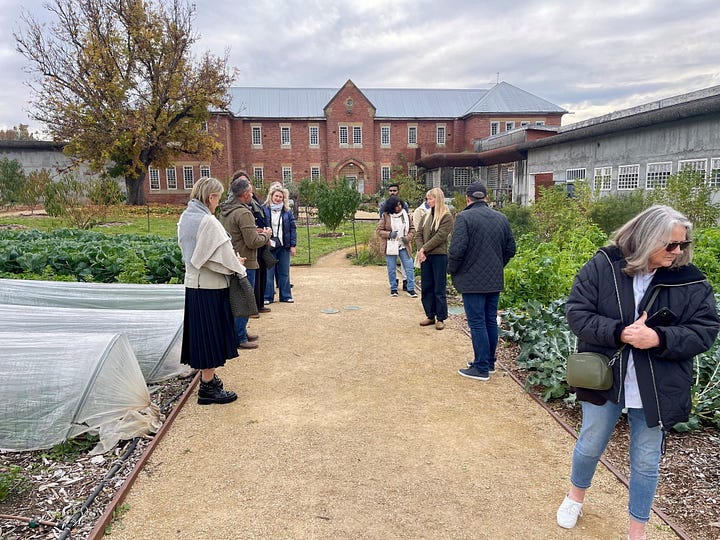
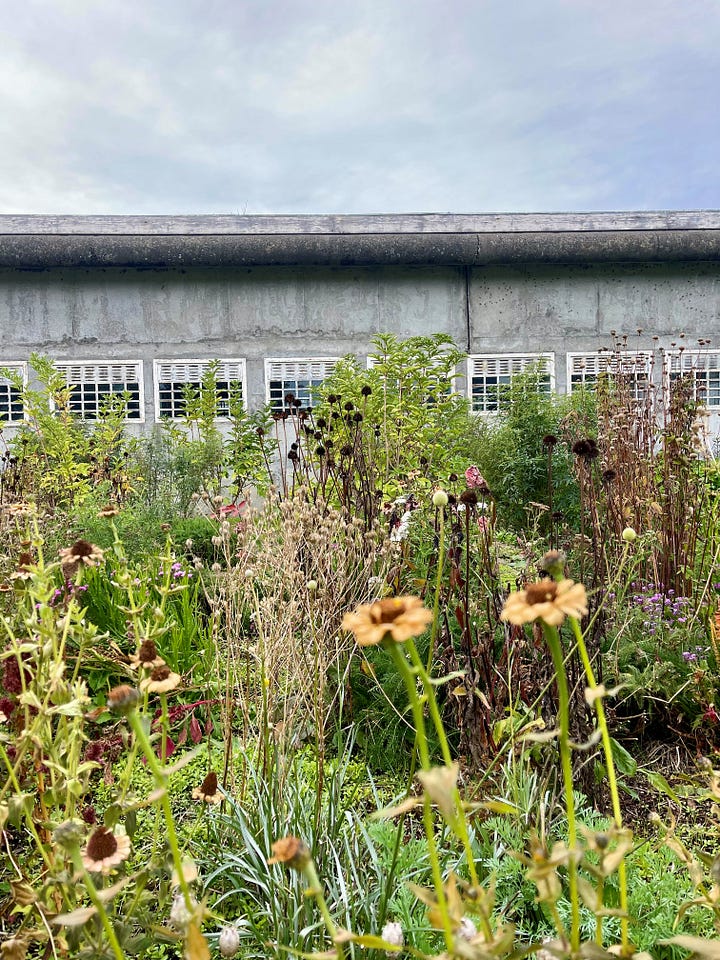
The berry patch is netted to protect fruit from birds, and the second orchard is underplanted with flowers to encourage a thriving insect habitat. The gardeners are constantly testing and refining their methods, always learning from the land.

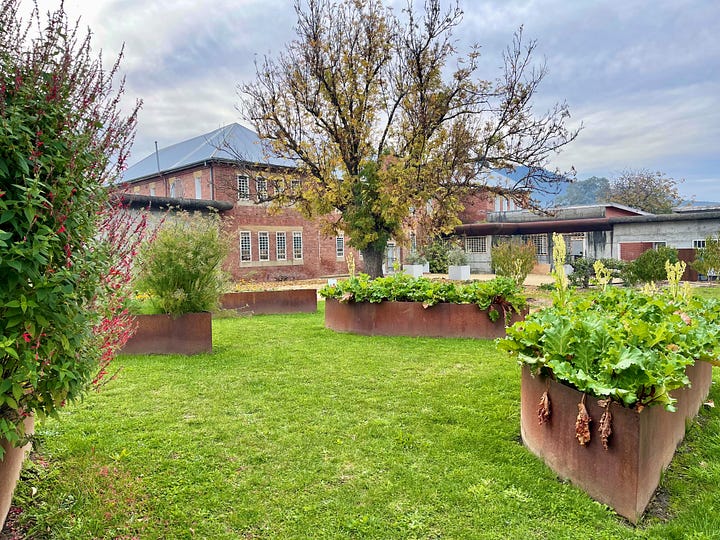
Nearby, a manmade pond supports local wildlife, overlooked by the property’s beehives. The garden spaces are also used for weddings and events, an utterly romantic prospect.

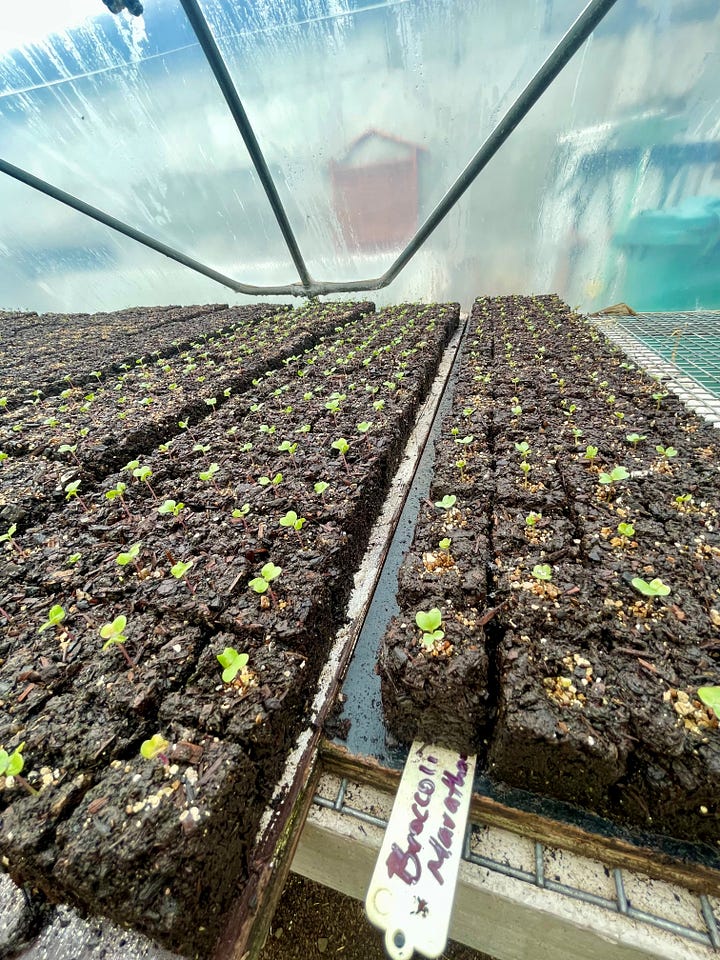
The Restaurant
The setting is both functional and atmospheric. The building’s institutional past is evident in its soaring ceilings, raw brickwork, pressed metal panels, large-paned windows, and linoleum floors. At the top of the menu is not a dish, but a mission statement: sustainability, hyper-seasonality, and self-sufficiency underpin everything that follows. The kitchen staff practice the ancient crafts of bread-baking, wood-fired cooking, smoking, fermentation, charcuterie and whole animal butchery and cheese-making.
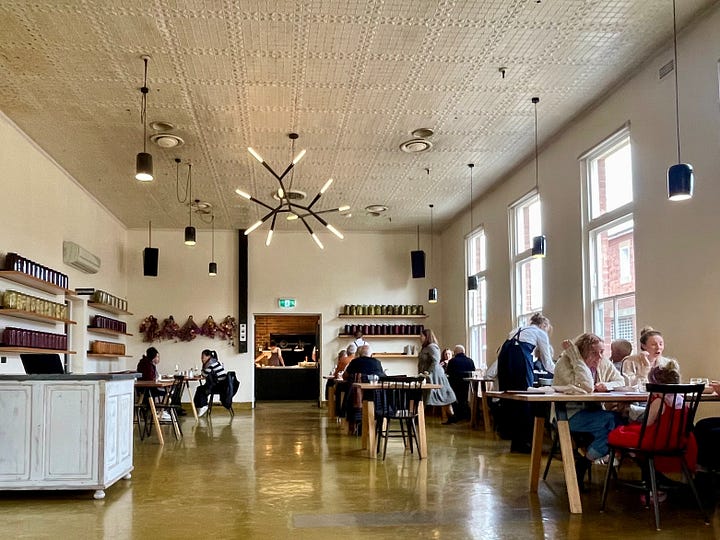

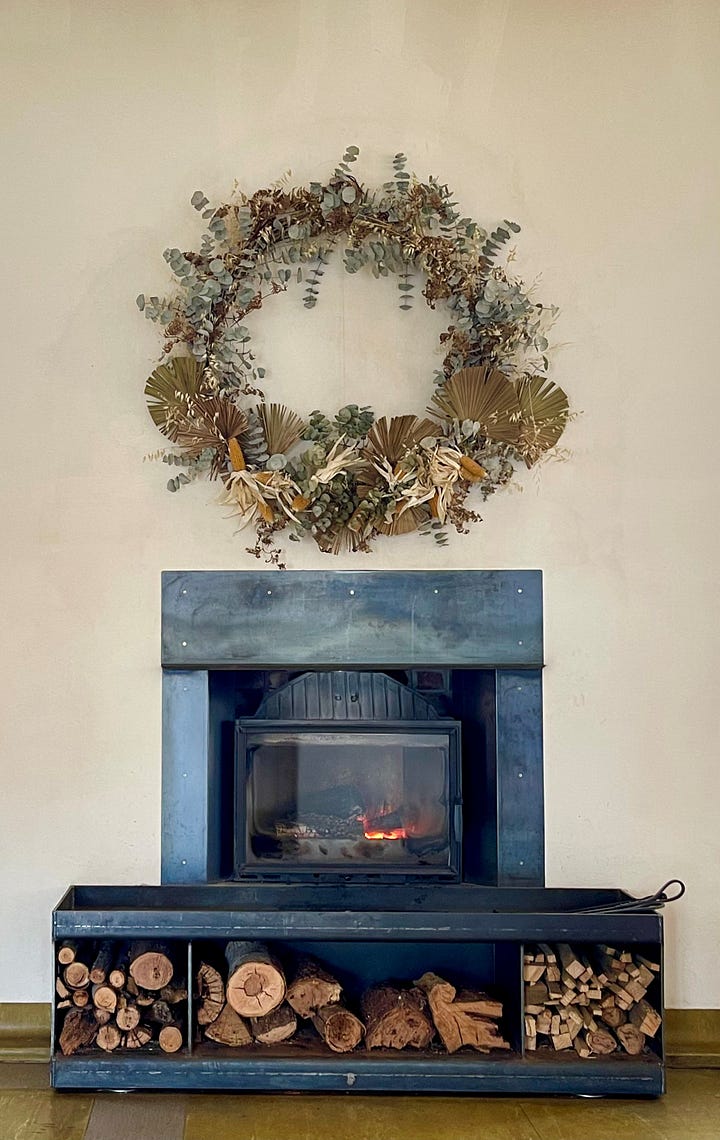
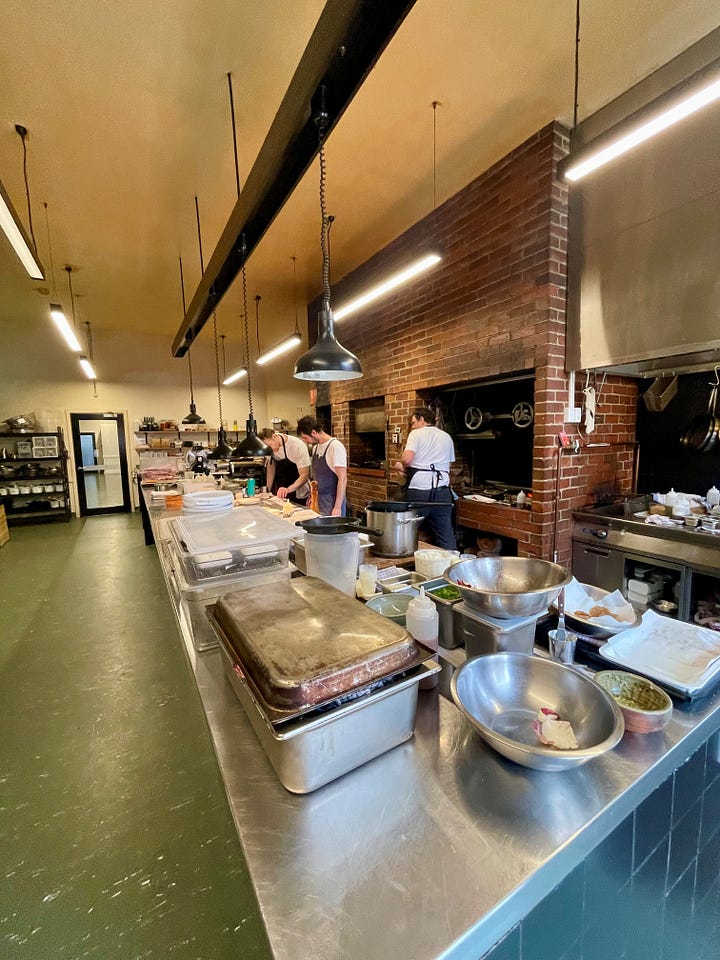
Only lunch is served at Agrarian during a 3-hour sitting, which does make it just that more difficult to get a booking. So we were fortunate to book both a tour and a restaurant timeslot on the same day. Our dining experience started at the restaurant and a stroll via the kitchen back through to the kitchen garden to the light-filled greenhouse where we were served vegetation starters and paired aperitifs.
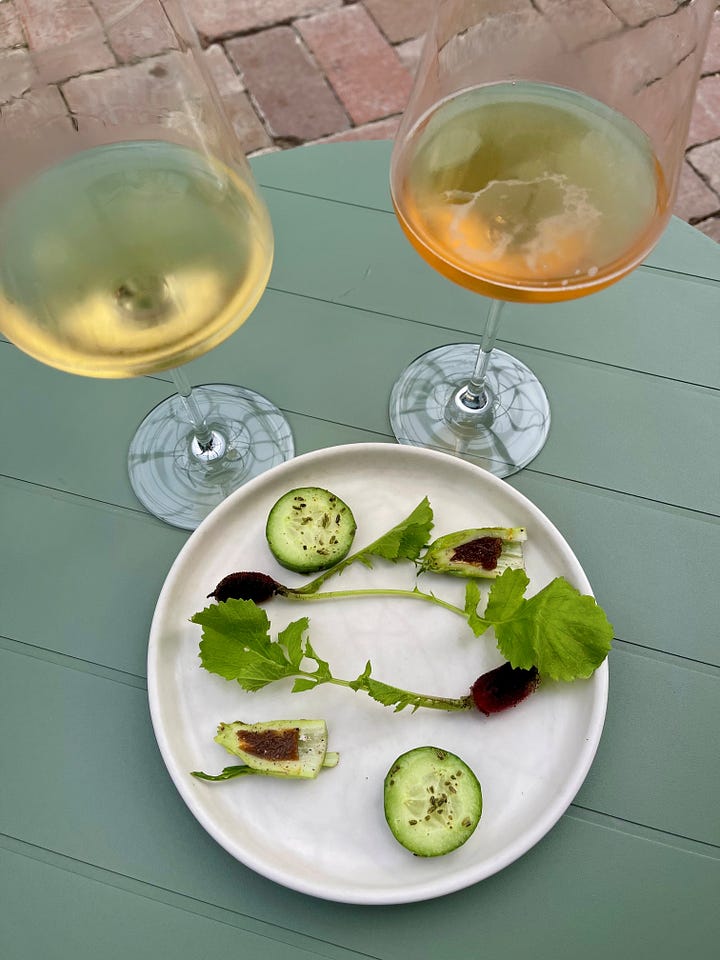
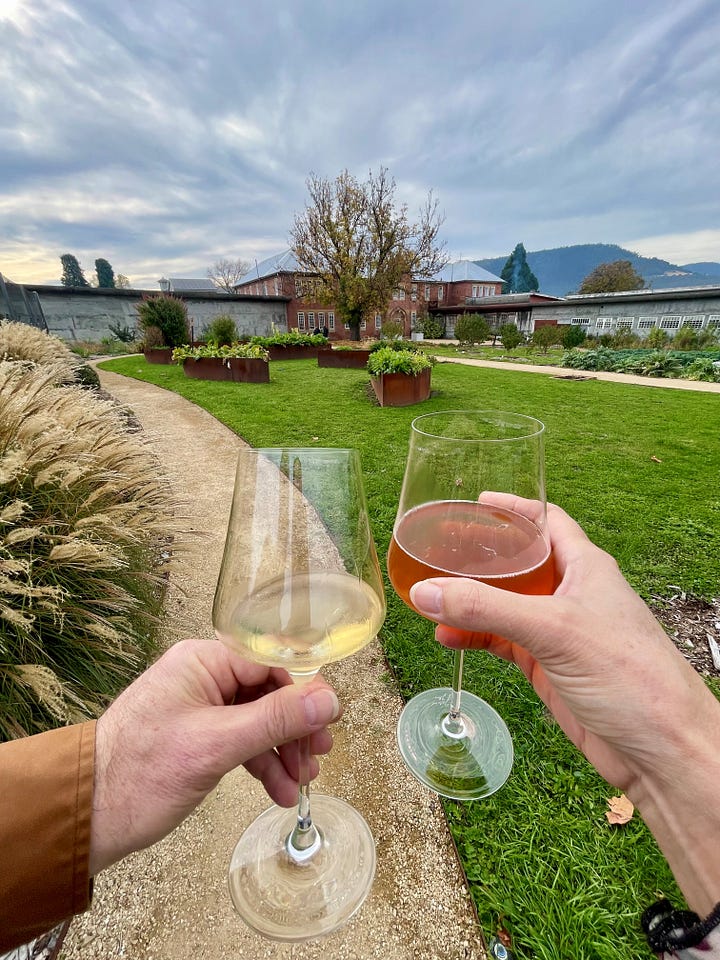
The menu evolves with the seasons and the availability of both homegrown and local produce, including selections of wine and beer. As for the food, well that’s something I highly recommend you try for yourselves. But for now, enjoy the few images I took of some of the dishes.
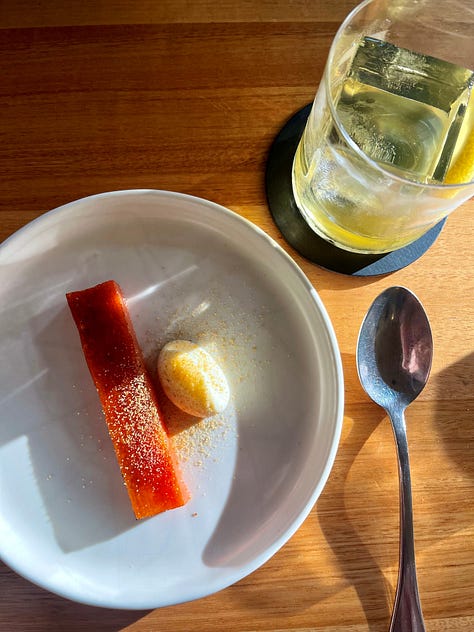


Sustainability
At The Agrarian Kitchen, every practice is carefully considered. The restaurant diverts 12,000 kg of waste from landfill each year by repurposing it into the kitchen garden. Ninety percent of fruit and veg is grown on-site, with the rest sourced from nearby, small-scale organic farms. Whole animals and wild-caught fish are used nose-to-tail and the waste re-used as charred bones or fish fertiliser, coffee grounds and food scraps go into compost, and even hand towel waste feeds the worm farms. Whey from cheesemaking is used in non-alcoholic drinks and as fertiliser. Citrus is purchased from neighbouring backyards. Nothing is wasted; everything is returned to the garden.
I loved Gabriel’s reference to the compost area being ‘the stomach of the garden’.
A Garden, A Meal, A Memory
This wasn’t a floral installation or a grand flower show, but it was every bit as captivating. The Agrarian Kitchen is a celebration of what happens when people approach growing and cooking with purpose and reverence. It’s a place where flavour, sustainability, and beauty are entwined, much like floristry itself and the direction to which my own floristry journey is taking. More sustainable, more environmentally conscious and more considered.
We are hoping to return to Tasmania in November, and yes I will be trying to book into The Agrarian Kitchen again and maybe even another garden tour.
Of course, there’s many other food-to-table, garden-to-table restaurants in the world. Do you have a favourite?
If you enjoy slow stories rooted in flowers, travel, and the seasonal magic that ties them together, a paid subscription helps me keep digging, wandering, and writing more of them. You'll get access to bonus posts, behind-the-scenes floral adventures, and perhaps a fragrant surprise.
References:
https://www.theagrariankitchen.com/, accessed 9th July 2025
Need some more flower travel stories from Tasmania?
A reminder of what flower shows are coming up?
Singapore Garden Festival
Dates: August 3–11, 2025
Location: Suntec, Singapore
Highlights: Features creative garden and floral displays, including orchids and exotic plants.
Medellín Flower Festival (Feria de las Flores)
Dates: July 25-August 4, 2025
Location: Medellín, Colombia
Highlights: Vibrant parades, traditional “silletas” flower displays, and cultural events.





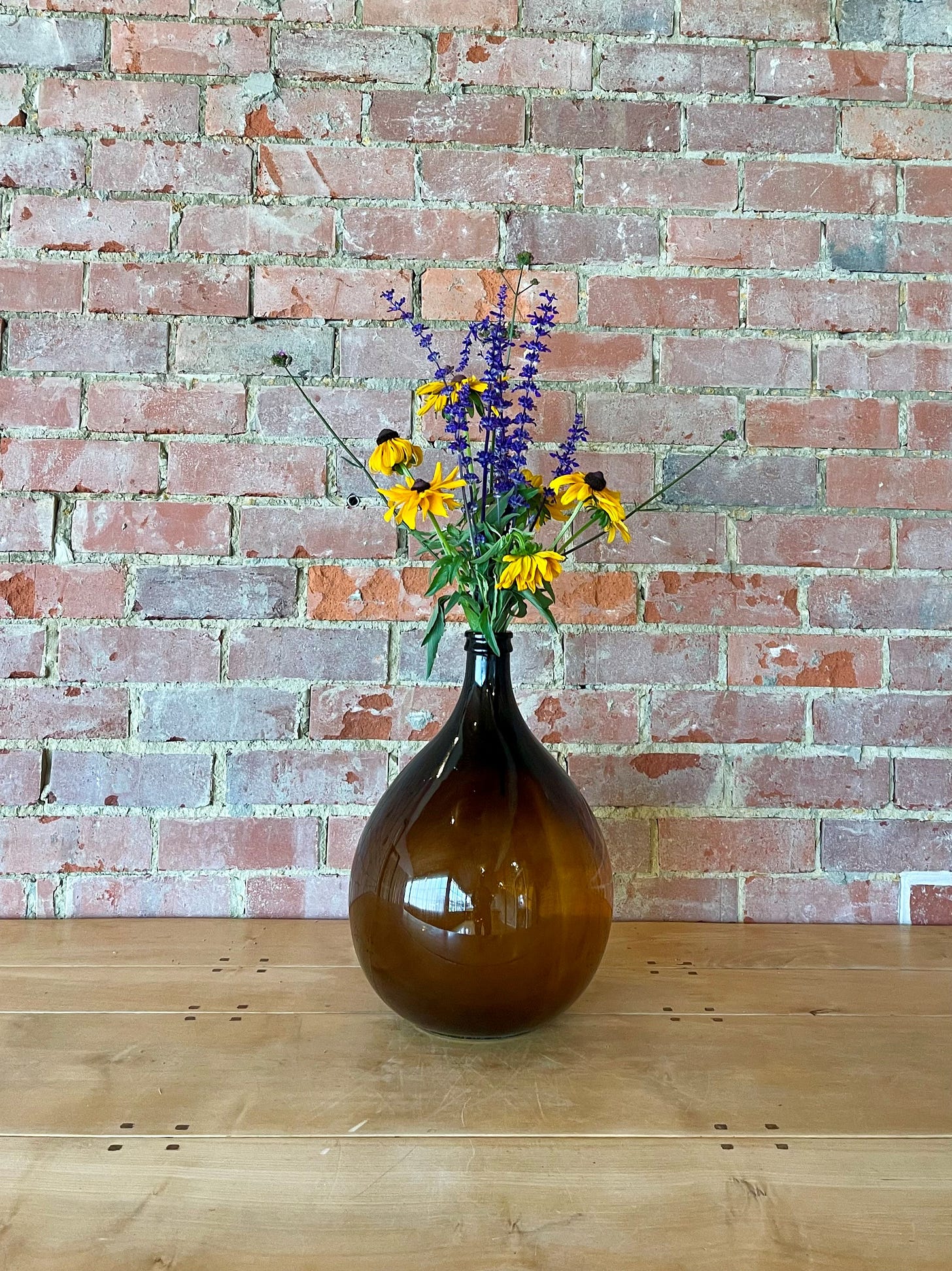
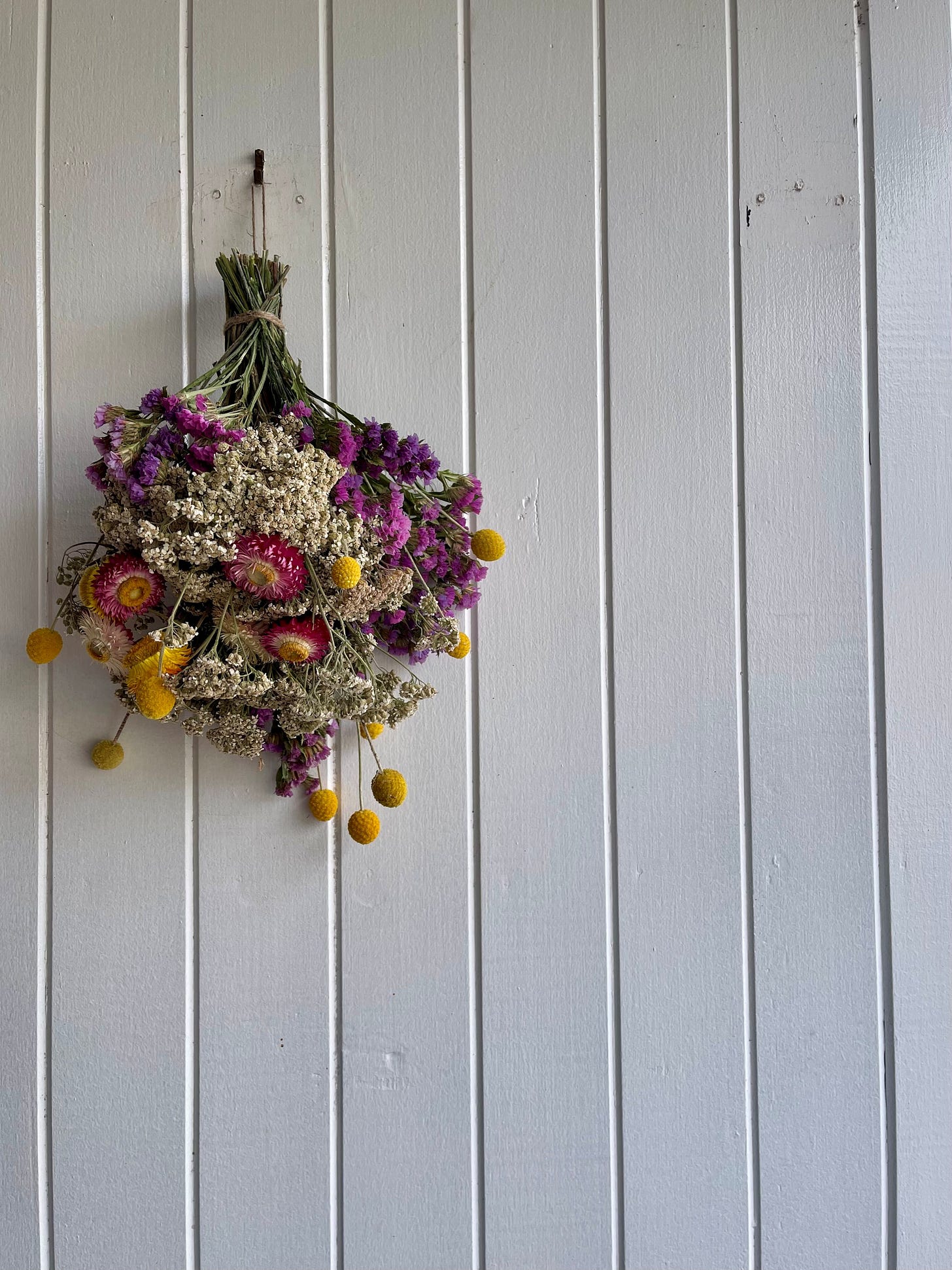

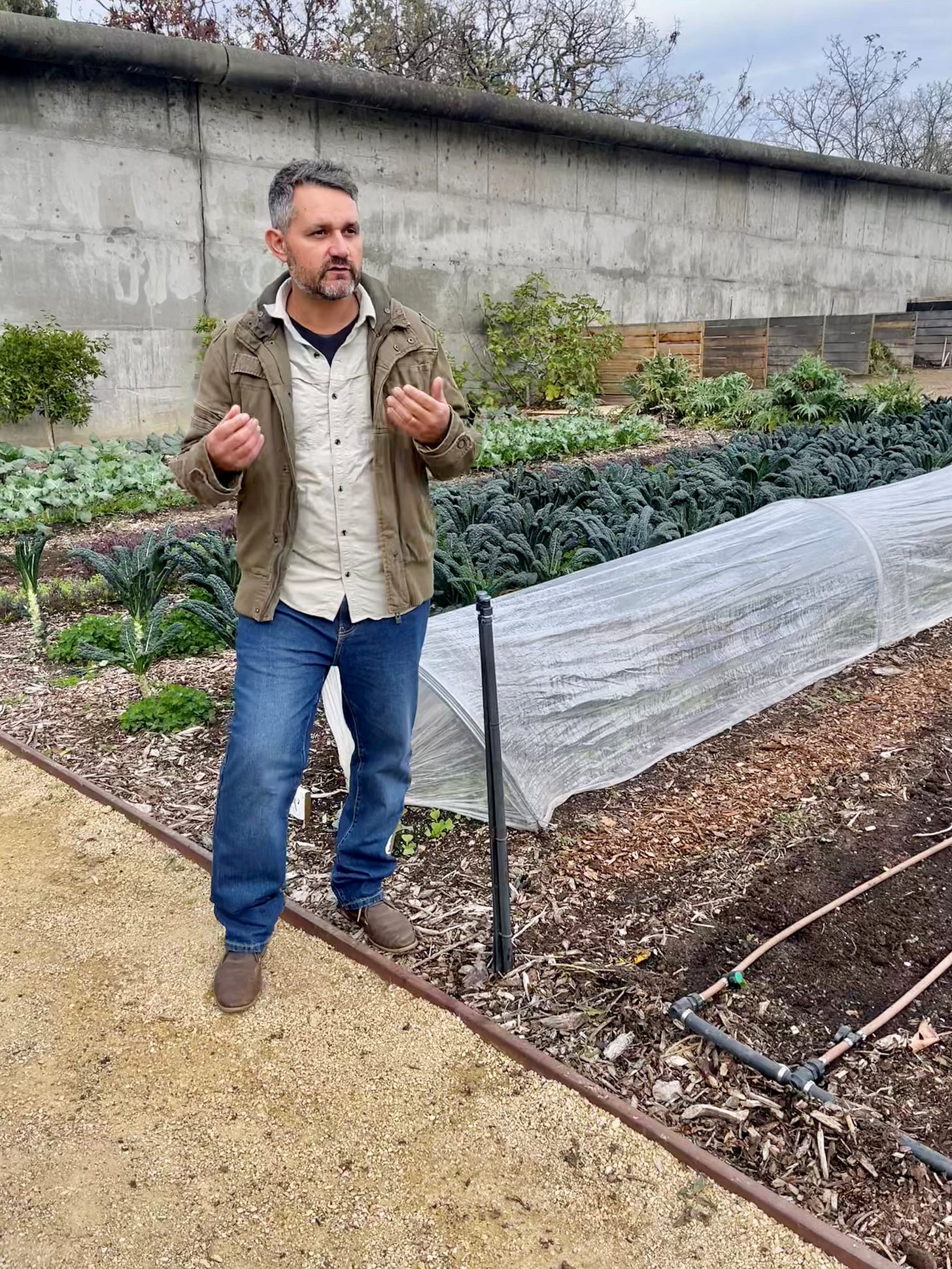



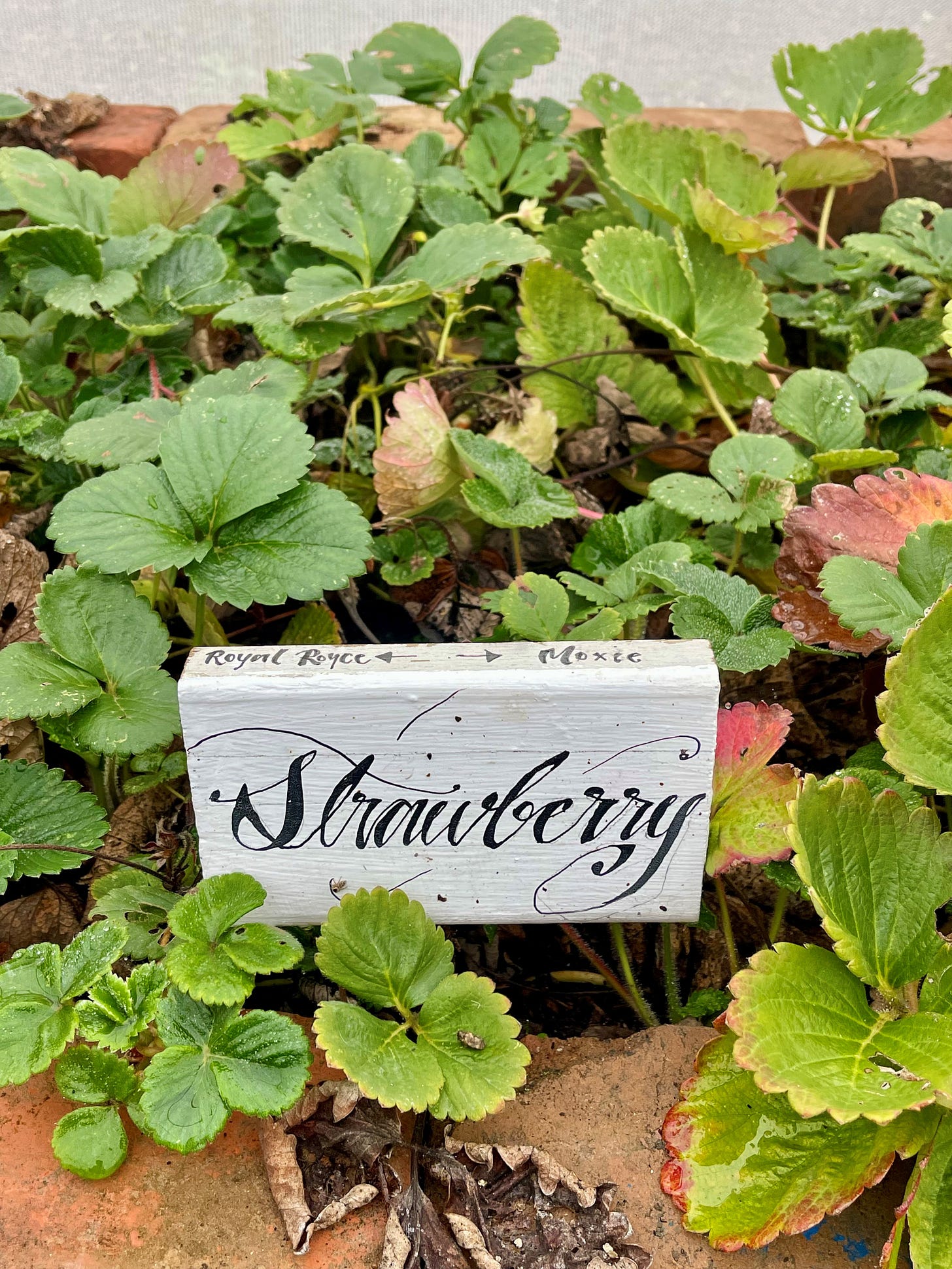


Wow, I loved this post!! The history & sustainability of the Agrarian Kitchen is fascinating. You do a beautiful job of showcasing it. My favorite farm-to-table restaurant is the Campfire restaurant. It’s where Hubby and I had our second date, but most importantly, it’s in the hotel where we got married. So, they catered all of our wedding meals. It has a special place in my heart. We go back every chance we get (it’s like 25 minutes from our house, so it’s easy to get to). 😁